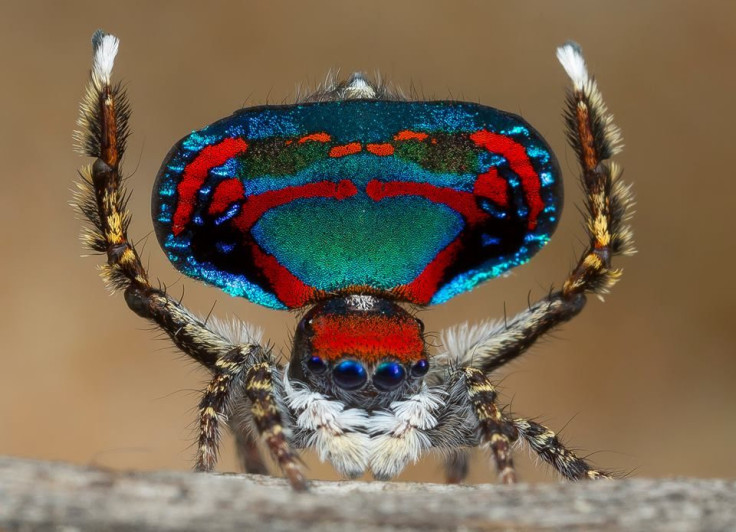Australian peacock spiders: New form of colour in male peacock spiders baffles scientists

A new form of colour has been discovered in peacock spiders. The structural colour that male peacock spiders display has never been documented before. Such colouration is much less common than pigment colouration where natural substances provide the colour to plants and animals. It is common in beetles and peacocks.
As per lead author and professor of computational physics at the University of Groningen, Doekele Stavenga, pigmented scales provide the red and yellow colours but the blue colour in male peacock spiders is due to special, structural-coloured scales. Stavenga and other researchers involved in the study used scanning electron microscopy and other such techniques to study the colours in depth.
They found that the blue colour in male peacock spiders is not only a structural colour but the type has never been described before.
“The special photonic invention of the Maratus splendens scales is the insertion of two layers of extremely fine threads or filaments that subtly tune the refractive index profile of the multilayers, thus creating the distinct, blue colour,” Stavenga told Seeker.
The male spiders try and woo their mates by dancing and drumming and that involves shaking their flashy colourful backside. If a male spider manages to impress a female, he gets to make more spiders. Else he could find himself in the wrong end of the fangs.
Peacock spiders, Maratus splendens, are found in Australia. The modified hairs on the peacock spiders use two different mechanisms to generate hues. The blue hue is derived from tiny nanostructures that reflect light of particular wavelengths.
According to National Geographic, “these nanostructures are embedded in flat, convex, sac-like scales, and the whole apparatus amplifies the reflected light. Altogether, it’s a peculiar arrangement of nanothings that scientists have never seen before in any animal.”
The study has been published in the Journal of the Royal Society Interface.





















